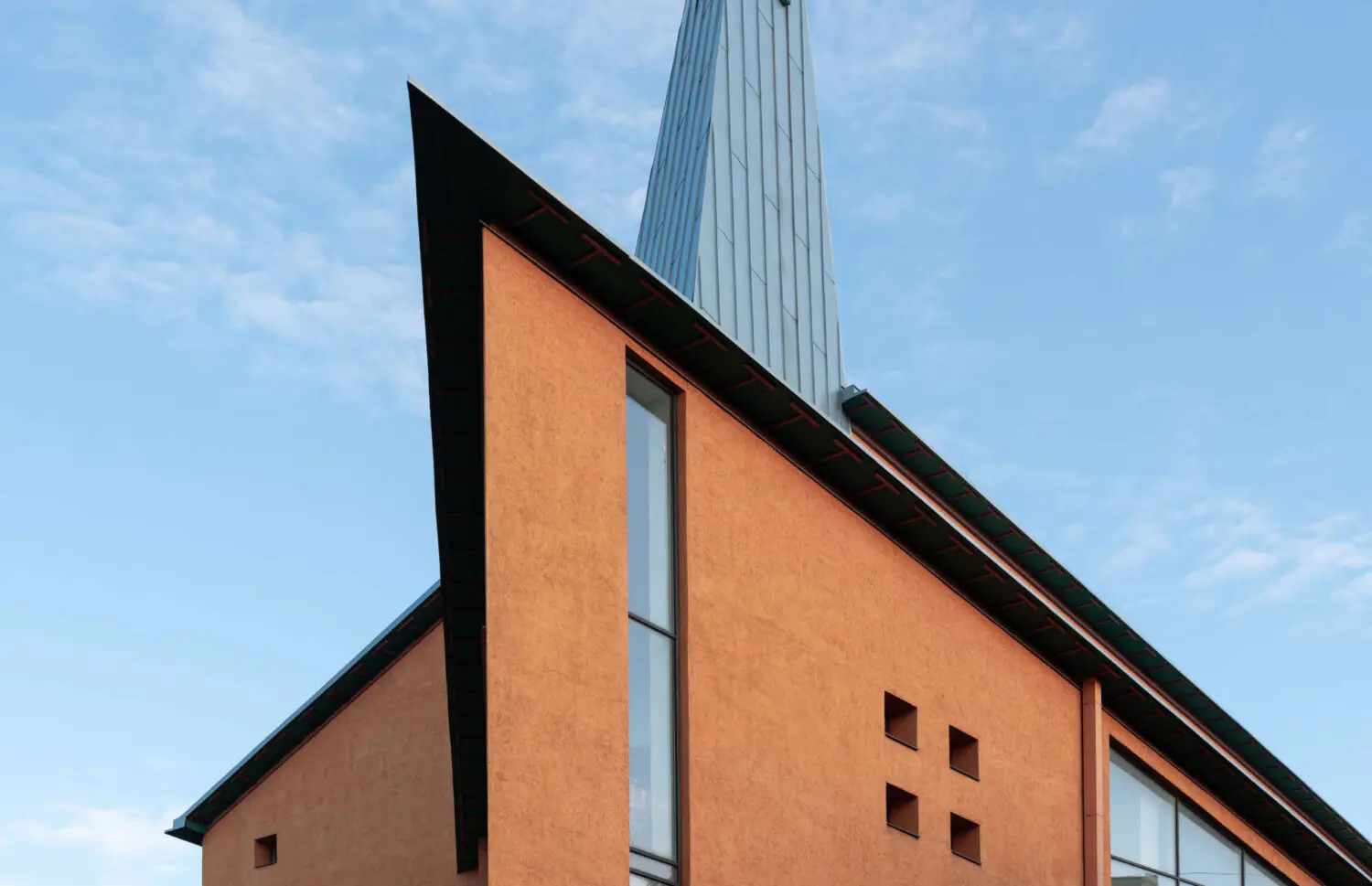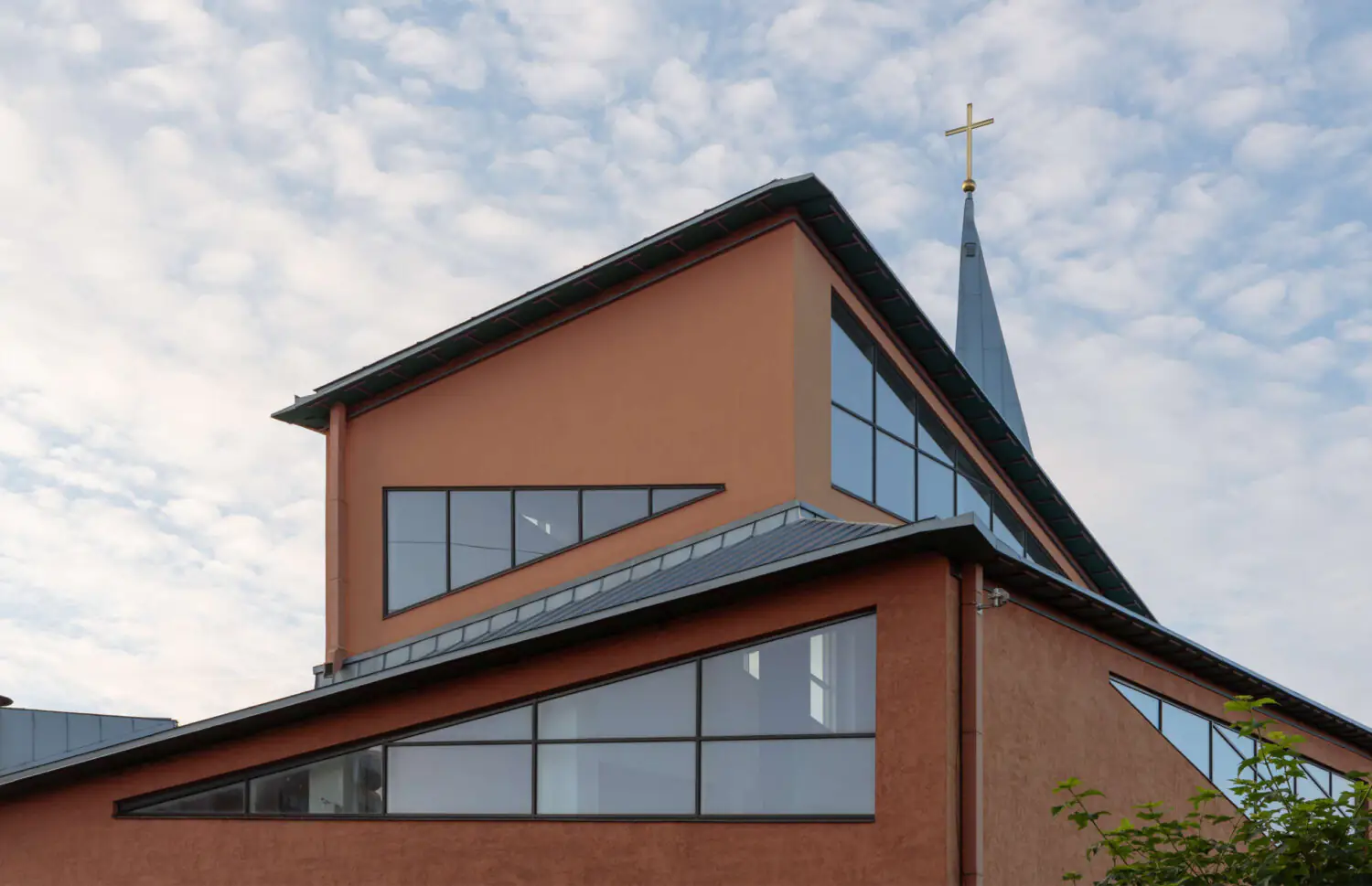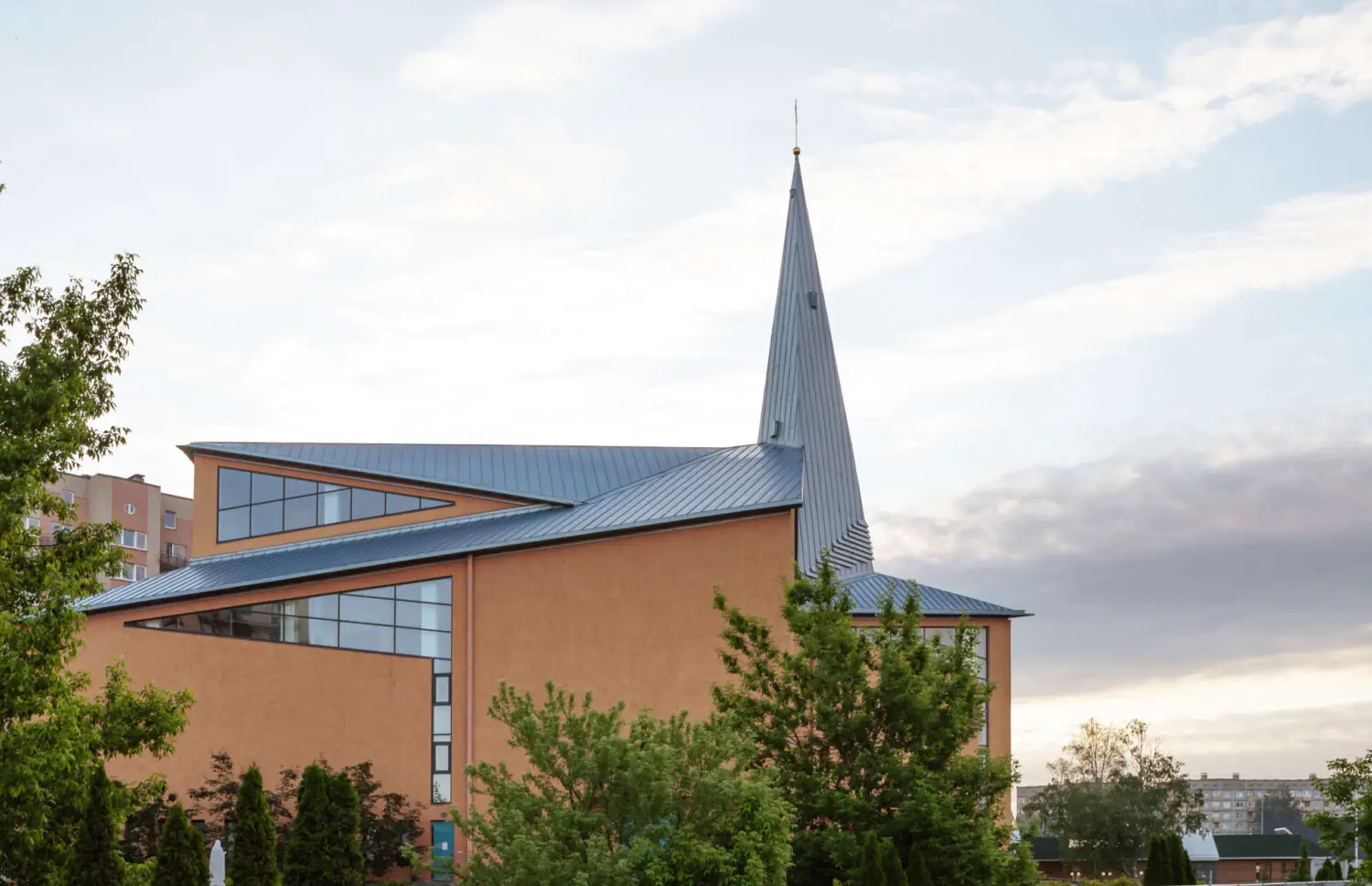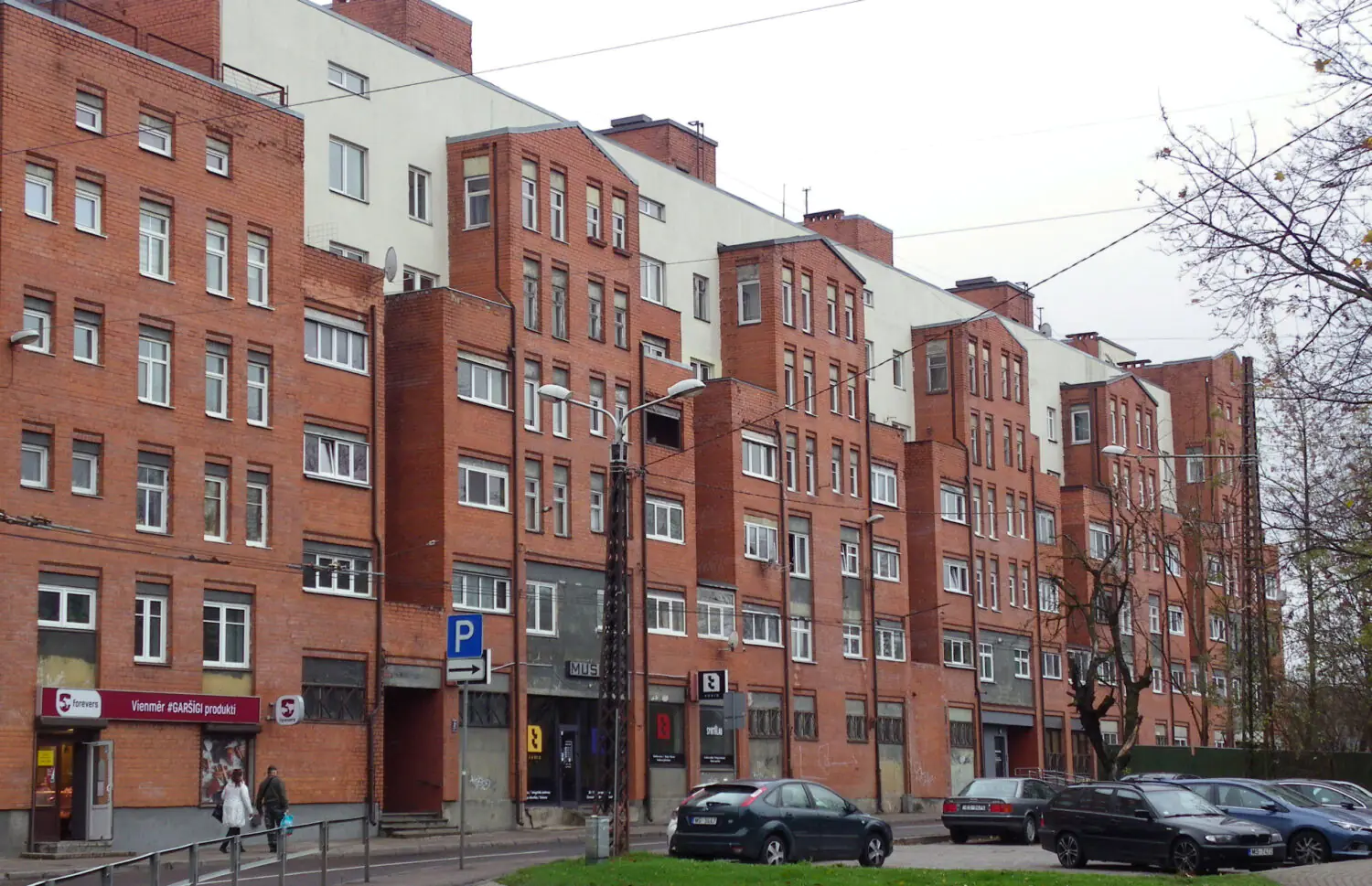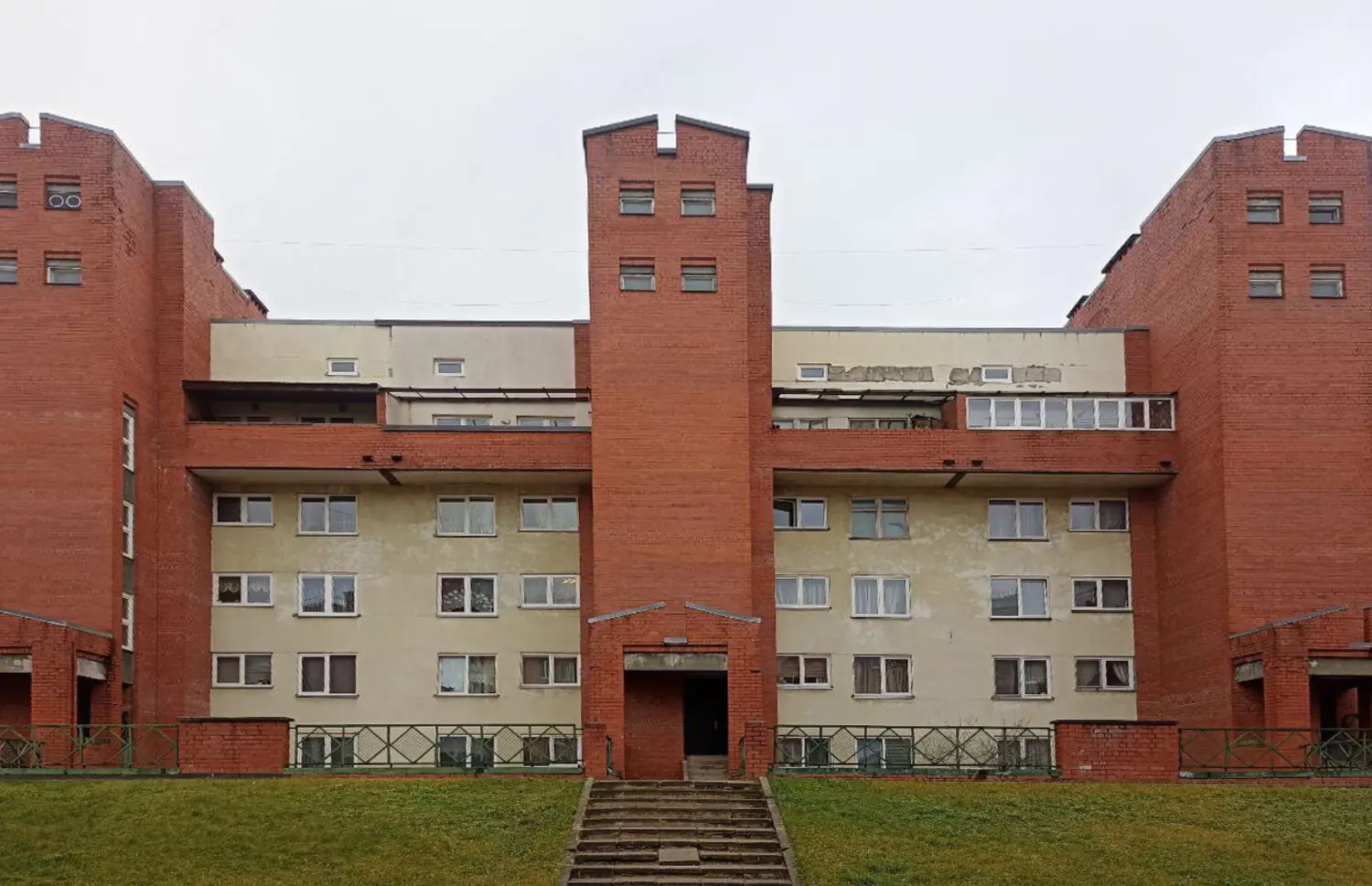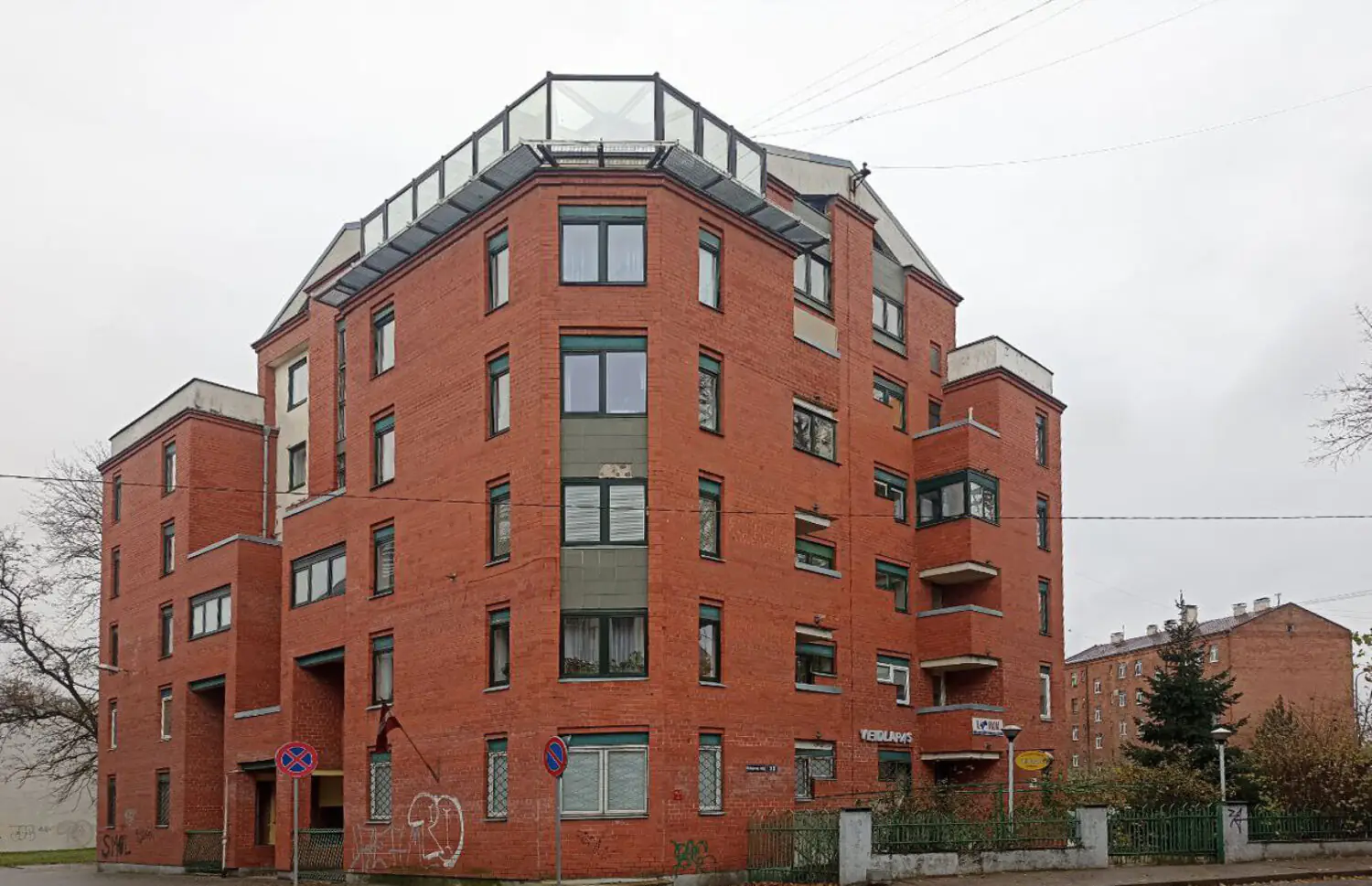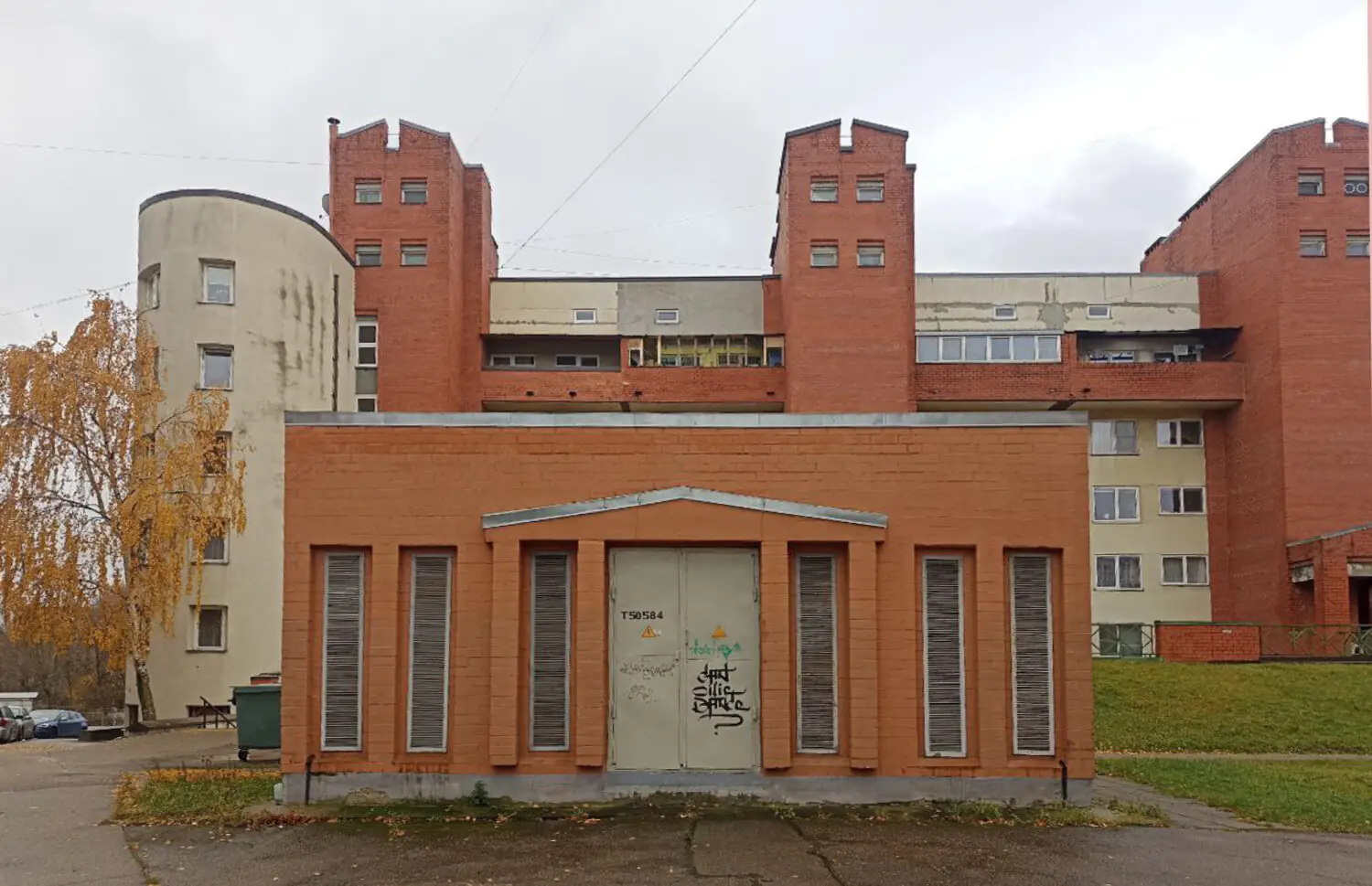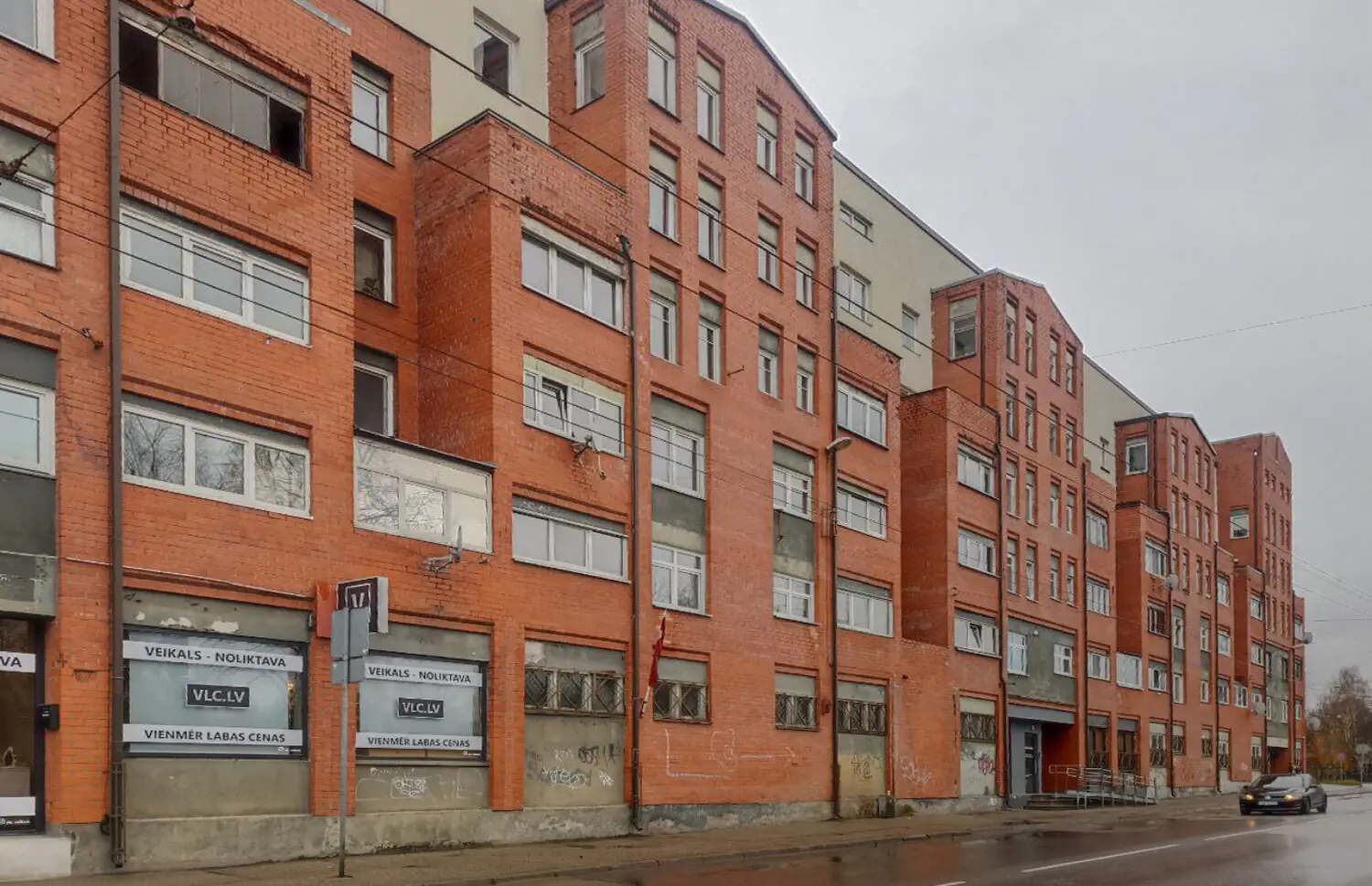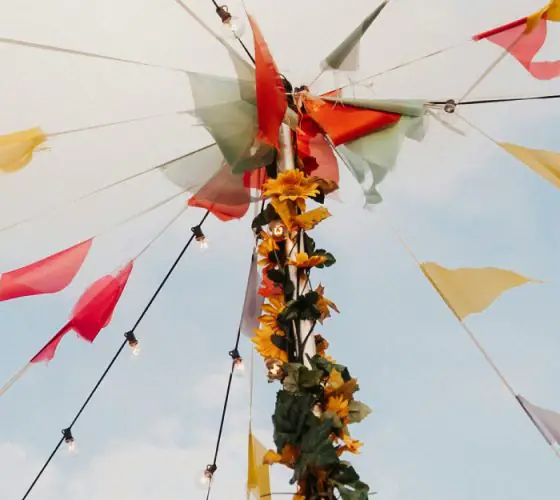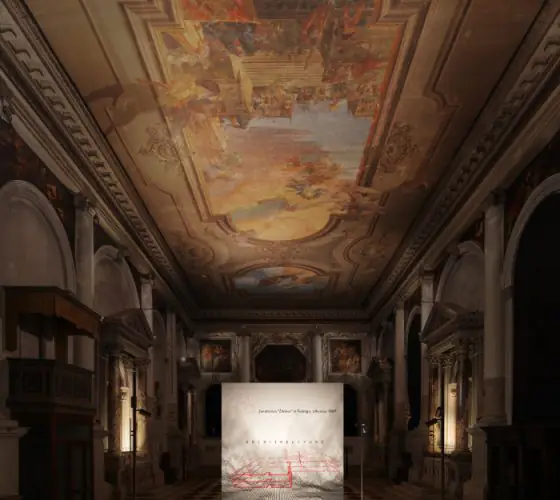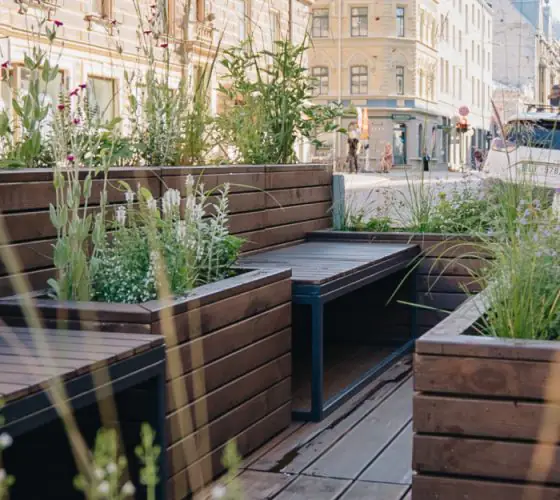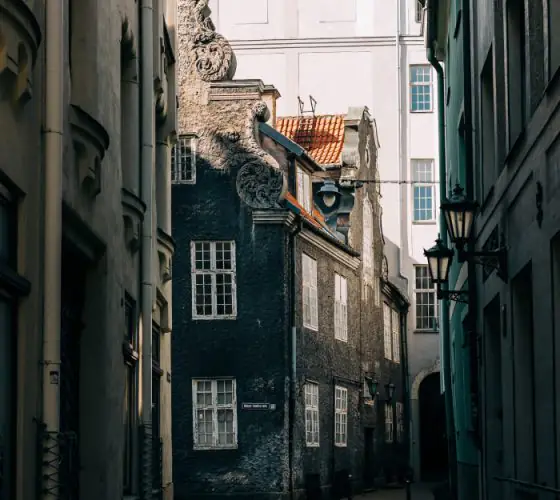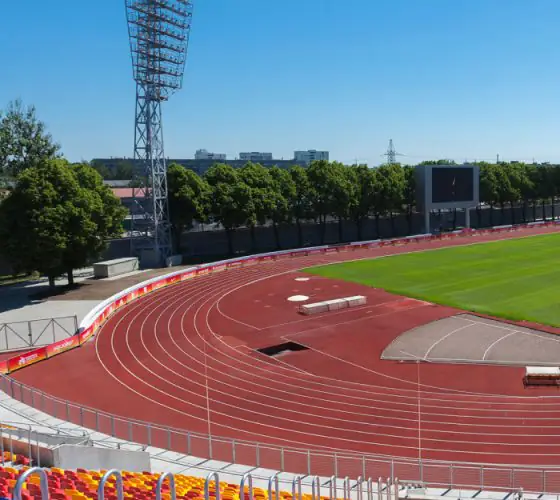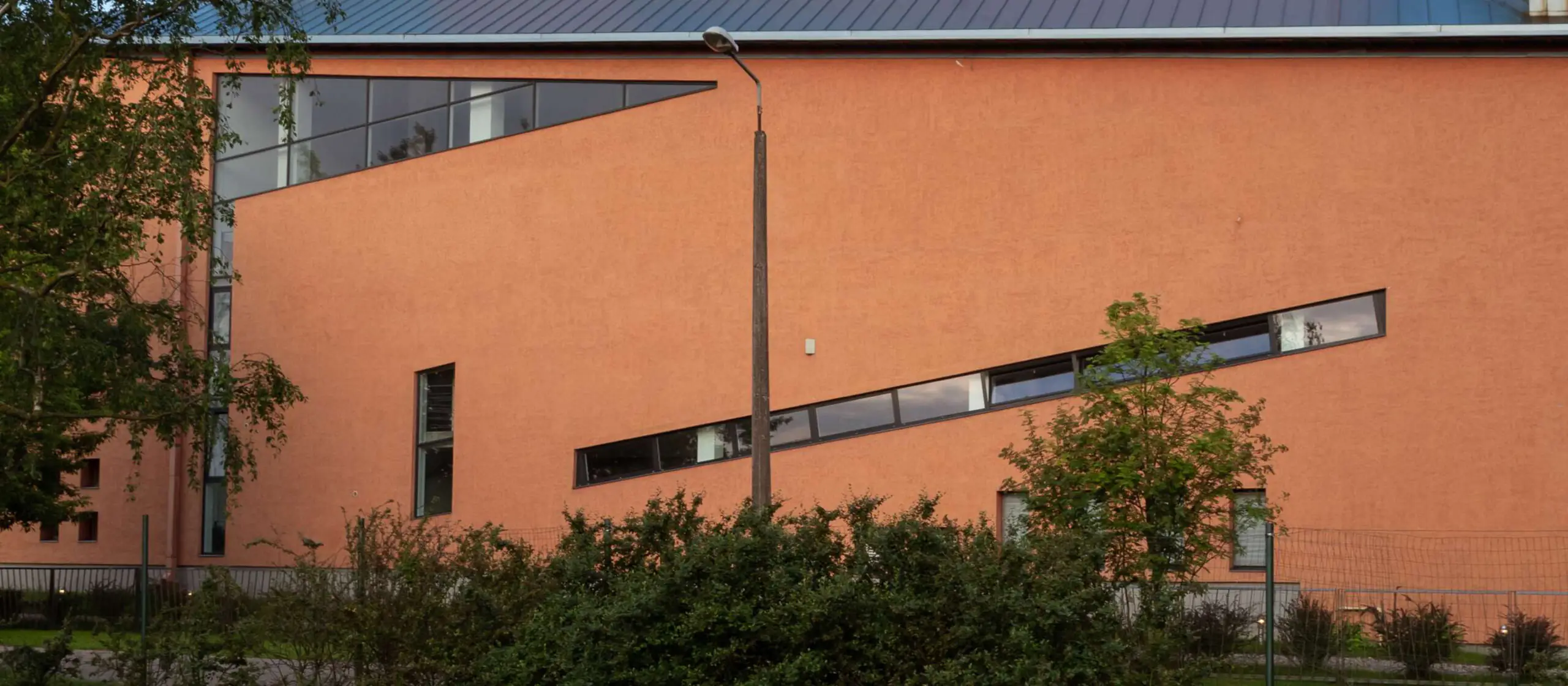
It was the 1990s. Latvia had finally freed itself from Soviet occupation, which led to the development of a market economy and the emergence of various architectural studios. At that time, they built everything from medieval castles to odious shopping malls, where the classical column is quietly combined with a huge glass cylinder.
The untrained viewer is usually confused and even horrified by such buildings. Behind every urban crossroads, a new «Circle of Hell» in the form of a playful reinforced concrete curve or a strange cap-like dome may be encountered.
We decided to save you the aesthetic agony and explain the meaning of this architecture—or at least try.
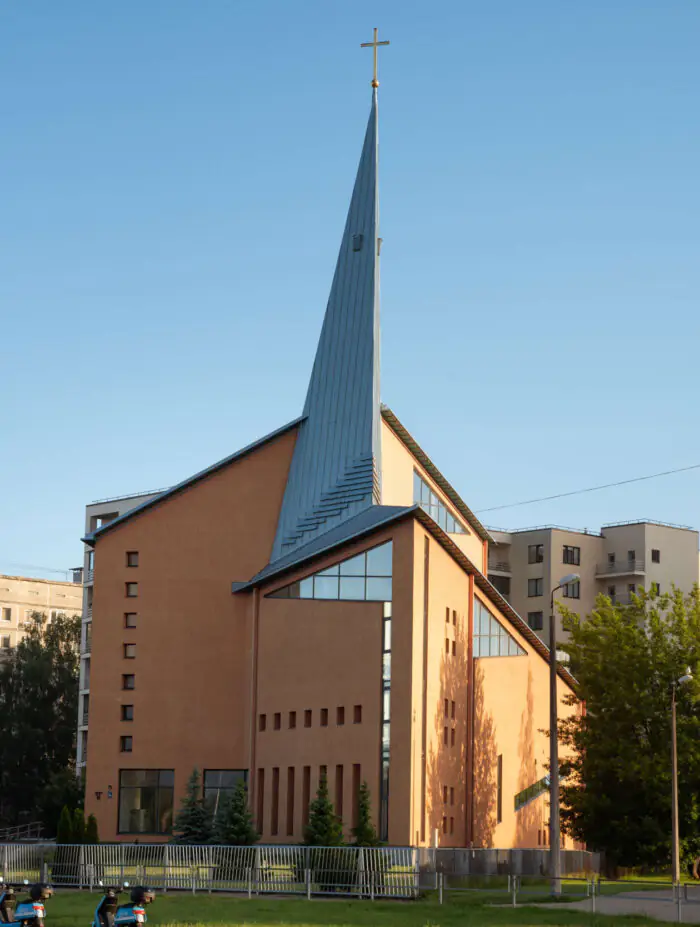
bauroc.lv
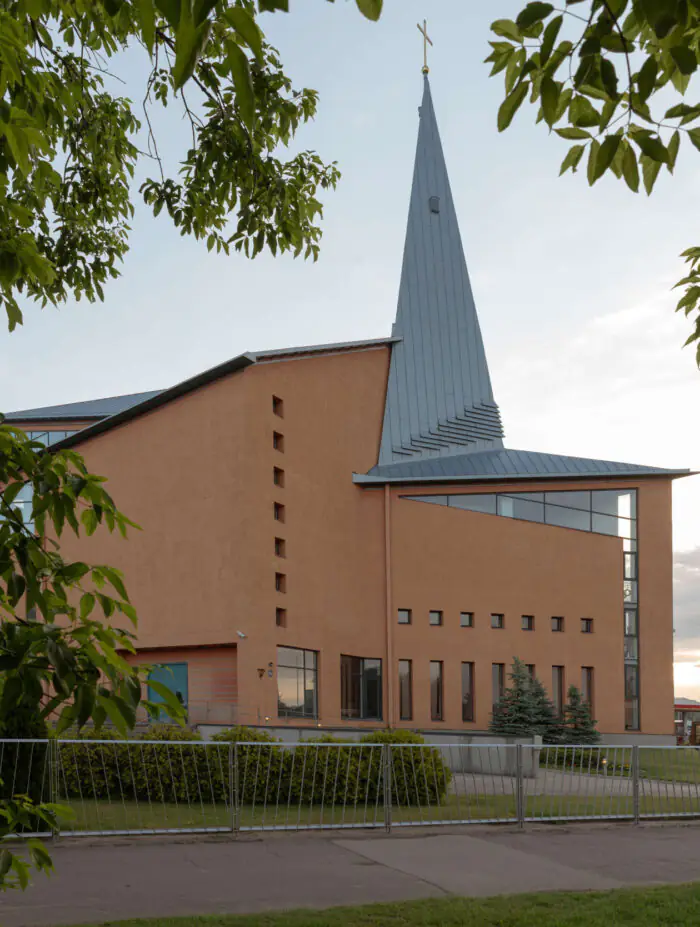
bauroc.lv
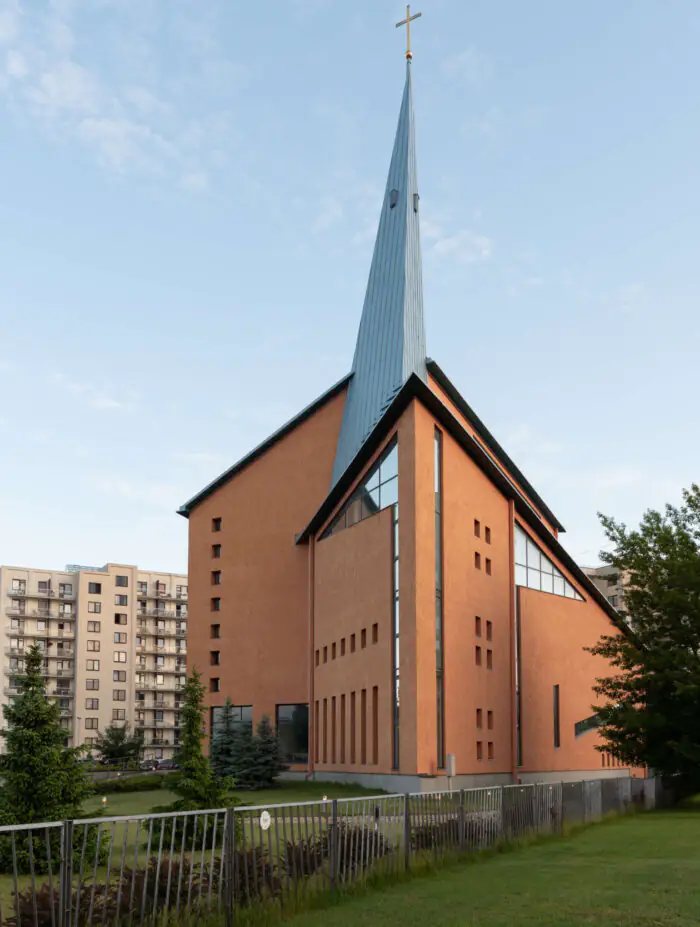
bauroc.lv
Understand and Forgive the Architecture of Postmodernism
The 1990–2000s is a special period in the history of every country that achieved independence and left the USSR. The planned economy was replaced by the market, the political and social structure changed, and this caused large-scale cultural transformations. The accumulated fatigue from a number of Soviet restrictions, widespread standardization and unification, as well as enthusiasm for the opportunities opened up, stimulated architects and their clients to the most daring experiments.
This is a time when adventurers come to the fore. Many of them have had their idea of market relations limited to the available American movies—but they are adventurers who are eager to get involved in an intriguing endeavor. They are romantics, ready to do anything for new achievements. It is thanks to them that we can now call that time the age of capitalist romanticism.
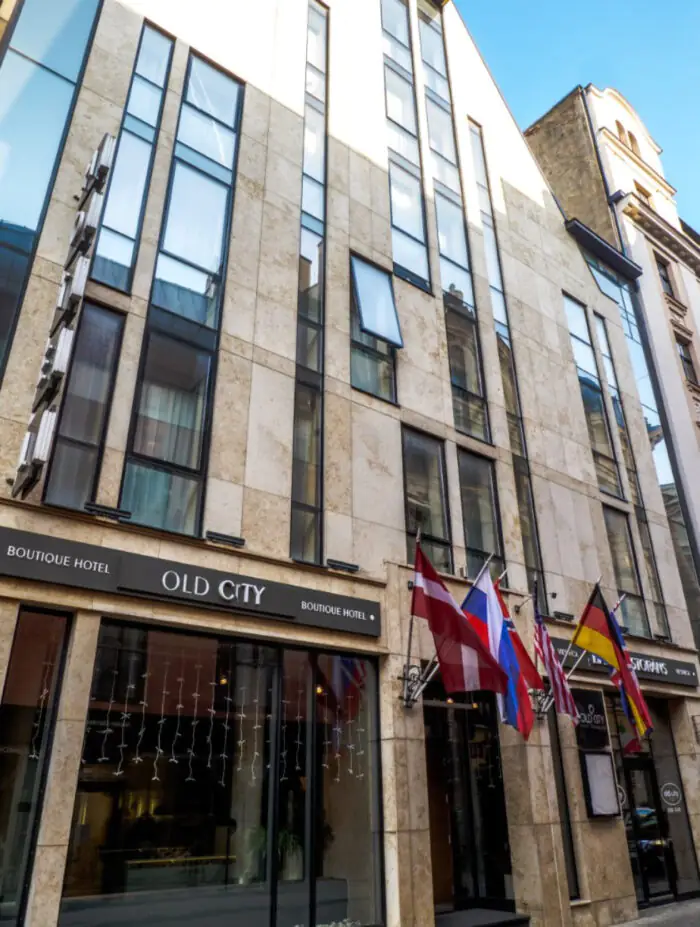
alukon.lv
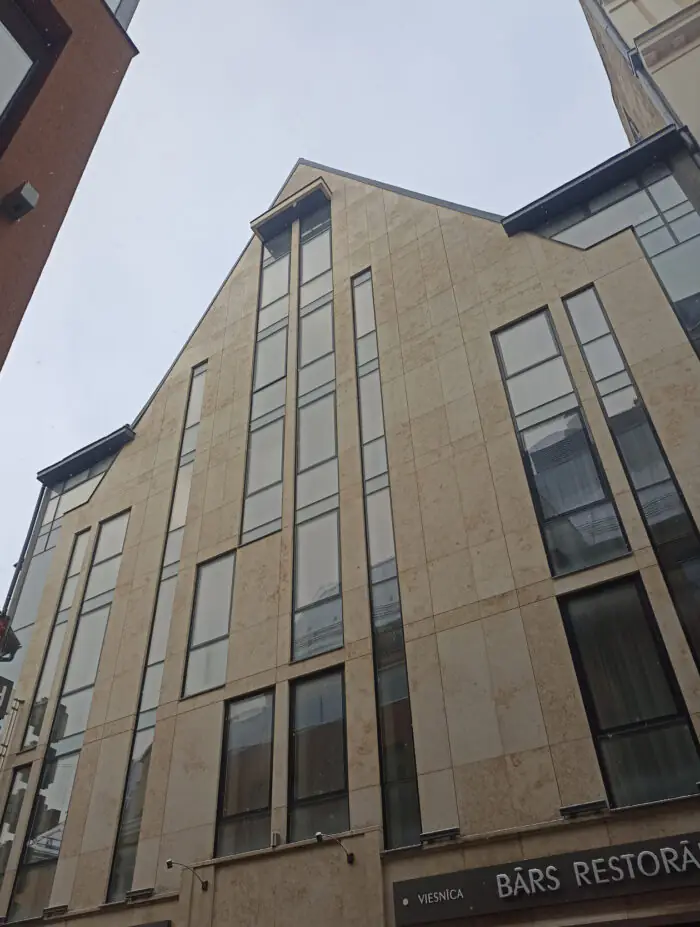

facebook.com
The cultural changes of the 1990s were important for Latvia, but they cannot be called revolutionary. As early as the previous decade, designers were already using numerous references to national heritage in their work, as opposed to typical modernist architecture.
In addition, the period of capitalist romanticism was superimposed on the global trends of postmodernism, in which the individual and local were more important than the universal and international. In the first post-Soviet decade, these features in architecture became even more vivid.
Against the background of modernism, which strives for utilitarianism and asceticism, such important postmodernist distinctions as diversity and playfulness in facades and interiors may seem excessive and even vulgar to many. But it is in this tremendous variety, conscious playfulness, and surprising symbolism that the value of postmodernity lies. Simply put, it is an architectural body-positivity with a multitude of forms and characters, or the most tolerant era in the history of architecture.
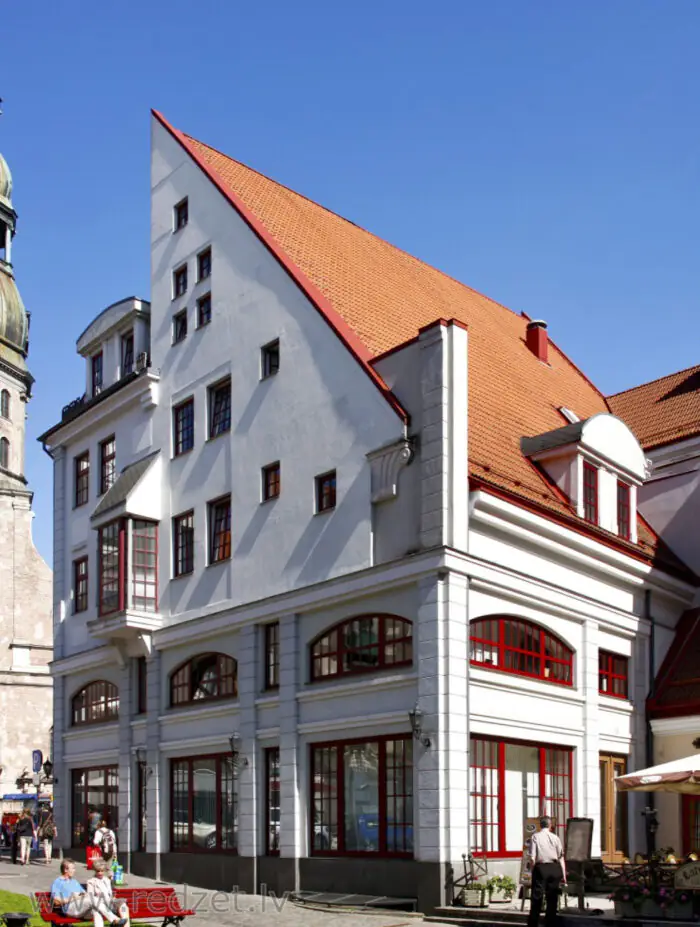
redzet.eu
The architecture of Riga’s capitalist romanticism of the 1990s and 2000s, which is inseparable from global postmodern trends, reflects the country’s history: the cultural, political and social transformations of the time. It is an important material heritage of the era, which we are only beginning to comprehend. Most likely, one article will not be enough for you to fall in love with this architecture, but hopefully, after reading it, you will have a better understanding of how and why many of the capital’s buildings came to be.
Regionalism
The main direction of Latvian architecture in the 1990s was regionalism. It was based on the expression of local peculiarities and their reinterpretation in modern construction. The liberation of Latvia from Soviet occupation contributed to the growth of national consciousness and freedom of creative expression. In their projects, architects turned to different historical periods and styles.
Neo-Medieval
It is difficult to imagine Latvian postmodernist architecture without expressive triangular elements reminiscent of the pitched roofs of medieval Riga or other Latvian cities. Mansards covered with ceramic tiles, weathervanes, towers and other elements referring to historical architecture are no less common. Red brick in such buildings is both a tribute to the architects of the past and one of the most affordable building materials in the 1990s.
In an attempt to counteract the «boxy» modernist architecture, such buildings take on a variety of guises, from a medieval castle to an imitation of an old town street. In the apartment building, whose facade faces Firsa Sadovņikova iela 21, the long massive wall is split into several sectors to create the impression of a more diverse architectural environment characteristic of Old Riga.
The most striking representative of regionalism in a neo-medieval spirit are the residential buildings on Firsa Sadovņikova iela 21, Jēkabpils iela 2 and Krāslavas iela 1—they were built by several architects over a period of five years, but they are usually seen as a complex.
Pseudo-functionalism
Regionalism is embodied in a different way in the pseudo-functionalist style. Here the architects refer to an important period in Latvian history—the 1920s and 1930s, when the country achieved independence and had not yet fallen under Soviet occupation.
During this period, modernist trends in architecture, characterized by a rational approach and utilitarianism, were actively developing. Clear forms, simple geometry, long ribbon windows, almost complete absence of decorations — all this is returning to architecture in the first post-Soviet decade. But, of course, these are no longer the serious functionalist projects that were built more than half a century ago, but solutions rethought in the spirit of postmodernity. In essence, what remains of functionalism here is only a shell, a collective image — a reminder of the past era and a kind of revenge over the long years of Soviet power.
An important example of regionalism in a pseudo-functionalist style is the residential building on Hospitāļu iela 8.
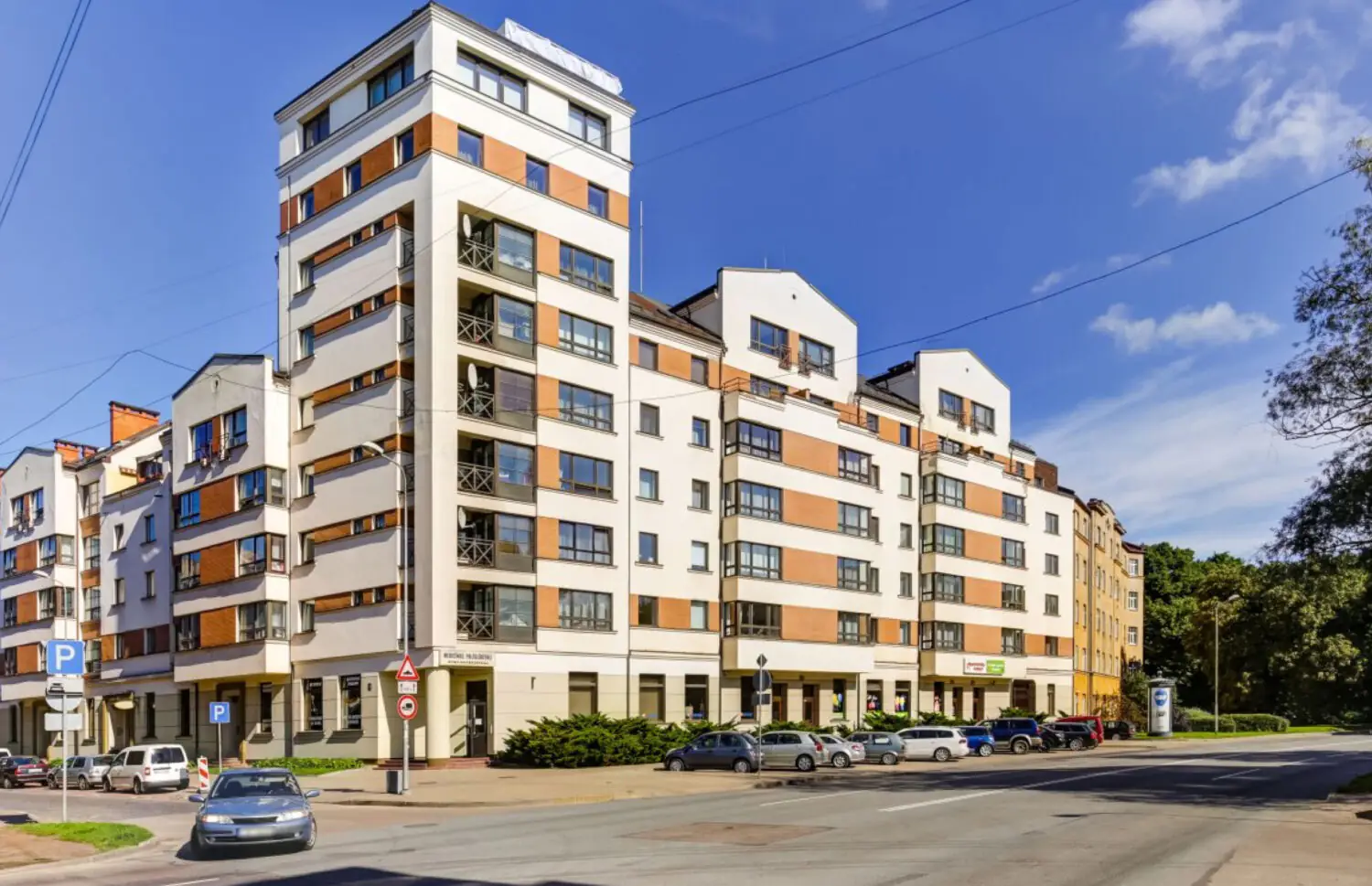
latio.lv
Contextualism
The main difference between contextualist architecture and regionalism is that it engages in a dialog with a specific place and the surrounding buildings, rather than reflecting on general historical themes. The Dzirnavu iela area is known for excellent examples of Jugend style, the main artistic movement of the early 20th century.
Nowadays, it is common to build new buildings in the neighborhood in such a way that they differ from the old houses and do not mix with the heritage of previous eras. But in the 1990s, other trends were popular: architects wanted to continue the historical line and contribute to the development of ideas from the past. As a result, very peculiar examples of neo-Jugend style appeared.
One of the most interesting examples of Riga contextualism is the apartment building on Dzirnavu iela 37.
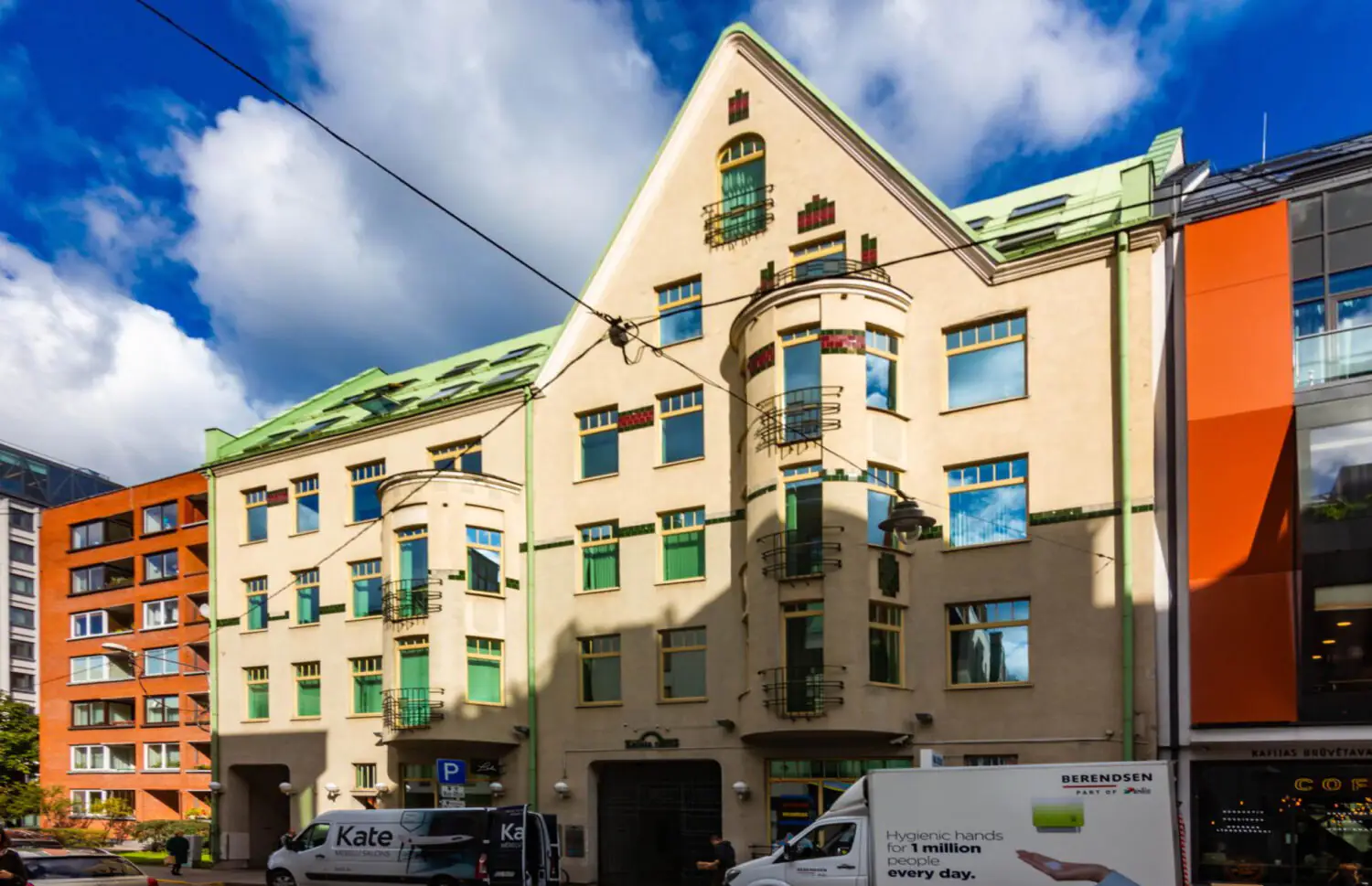
realat.lv
Folk
Such architecture theatricalizes and commercializes the popular. A good example is the Lido restaurant on Krasta iela. There is always a celebration here: plenty of food, drinks, ornate interiors, cheerful music, folk costumes, merry-go-rounds, noise and noise. This is the concentrate of the most cheerful thing in popular culture — the ultimate grotesque representation of life. But there is nothing wrong with that, as the existence of such idealistic places reflects the needs of the people and their culture.
For many people, “Lido” has long been an integral part of Riga, like the Dome Cathedral or the Central Market. It is a legendary place on Krasta iela 76, which is interesting to visit at least once in a lifetime.
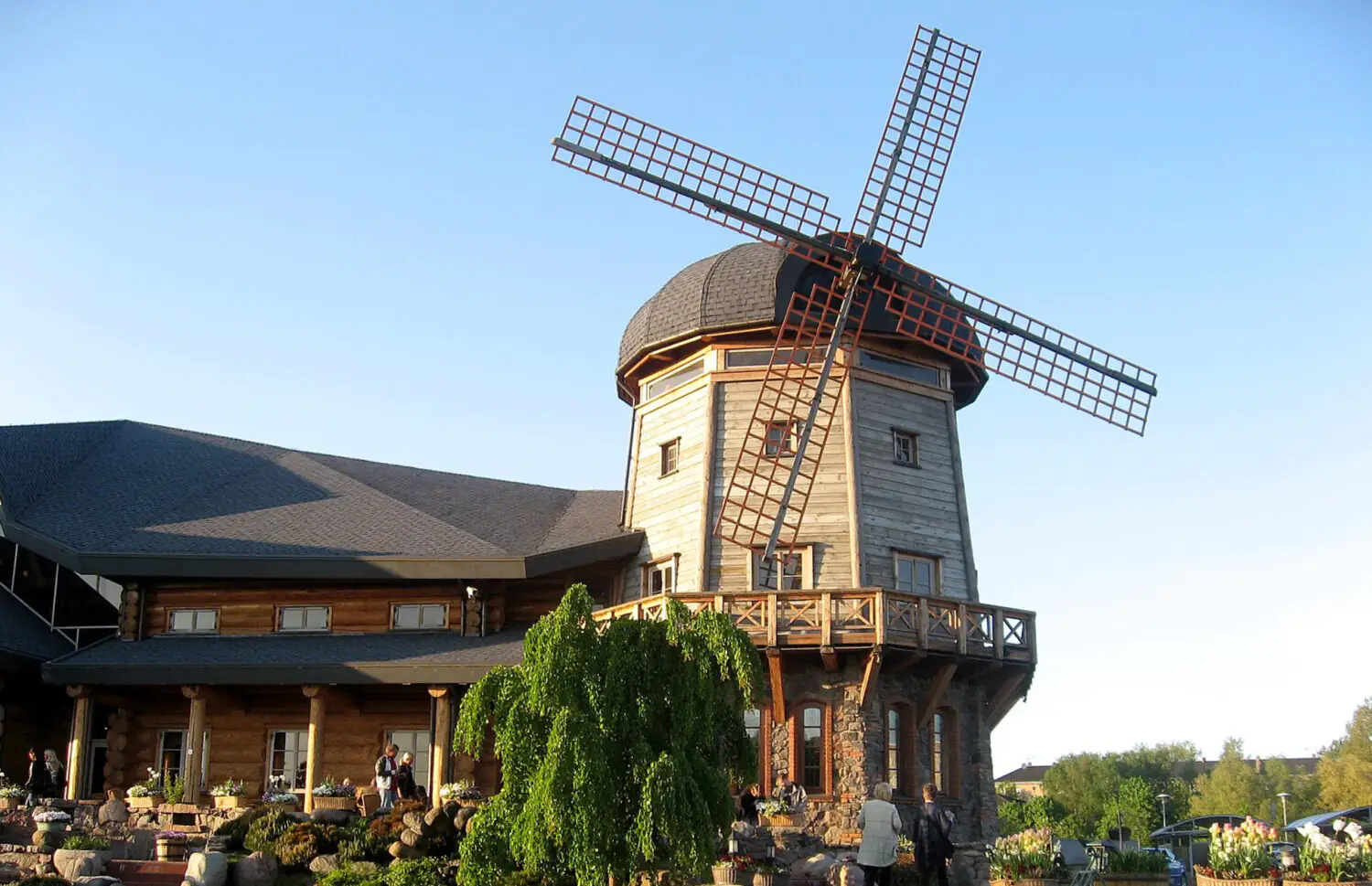
wikipedia.org
Phoenixes
Riga City Hall (1850) was severely damaged during World War II. During the Soviet occupation, its ruins were demolished and a modernist building of the Technical University was built on the vacated site.
After the proclamation of Latvia’s independence, it was decided to restore the most important Riga buildings lost during World War II. In order to revive the City Hall, it was necessary to demolish the Soviet building of the University, which was done. The facade of the building was tried to be repeated as close to the original as possible, but its back part was radically changed: glass, playful curves, expressive metal structures.
Right in front of the Riga City Halll stands the elegant House of the Blackheads. It was also restored, but a little earlier—in 1996–2000.
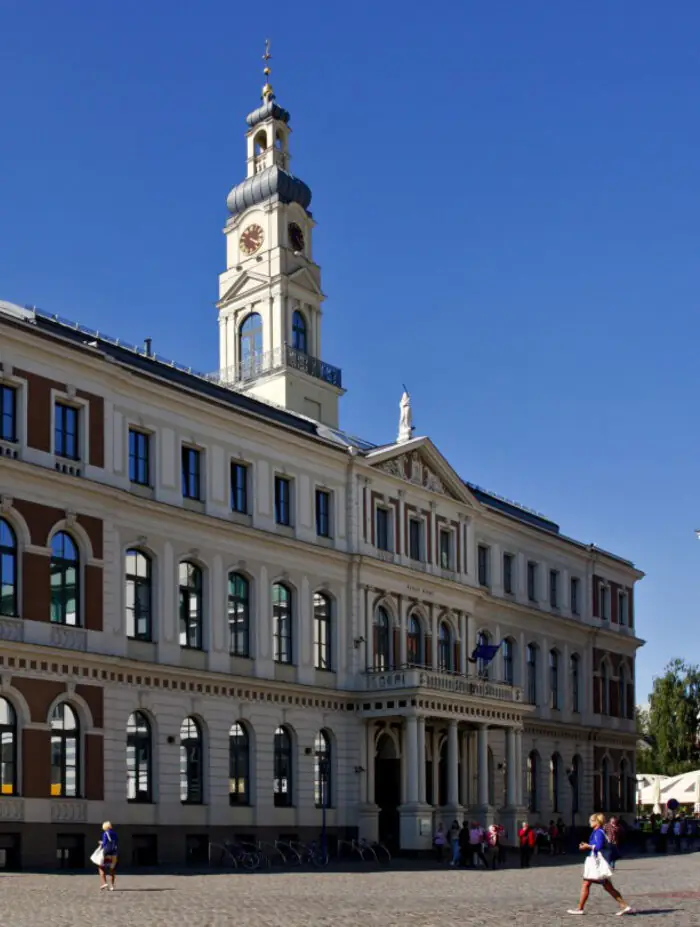
redzet.eu
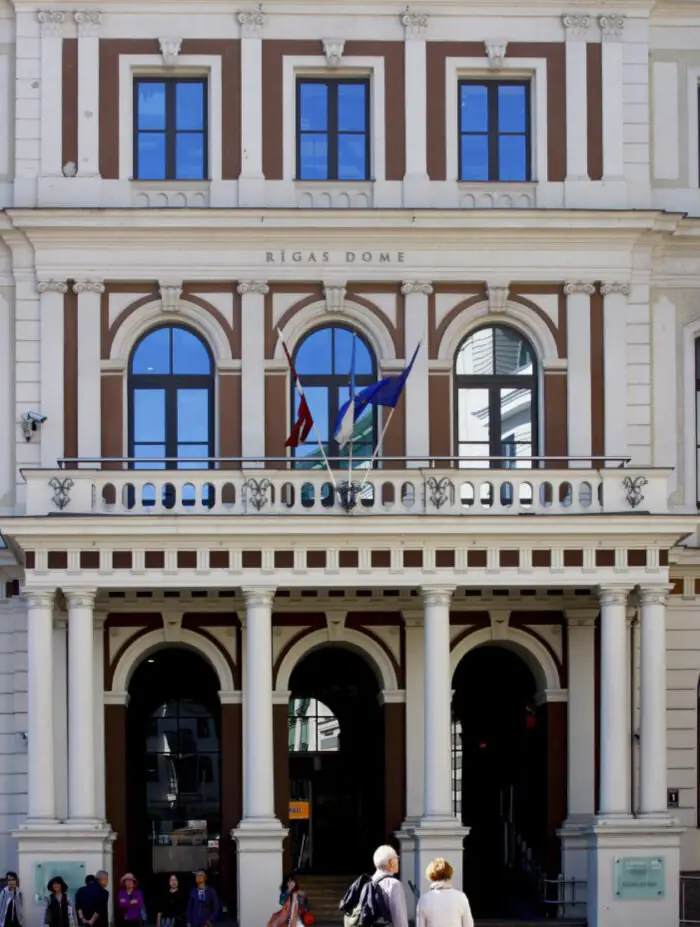
redzet.eu
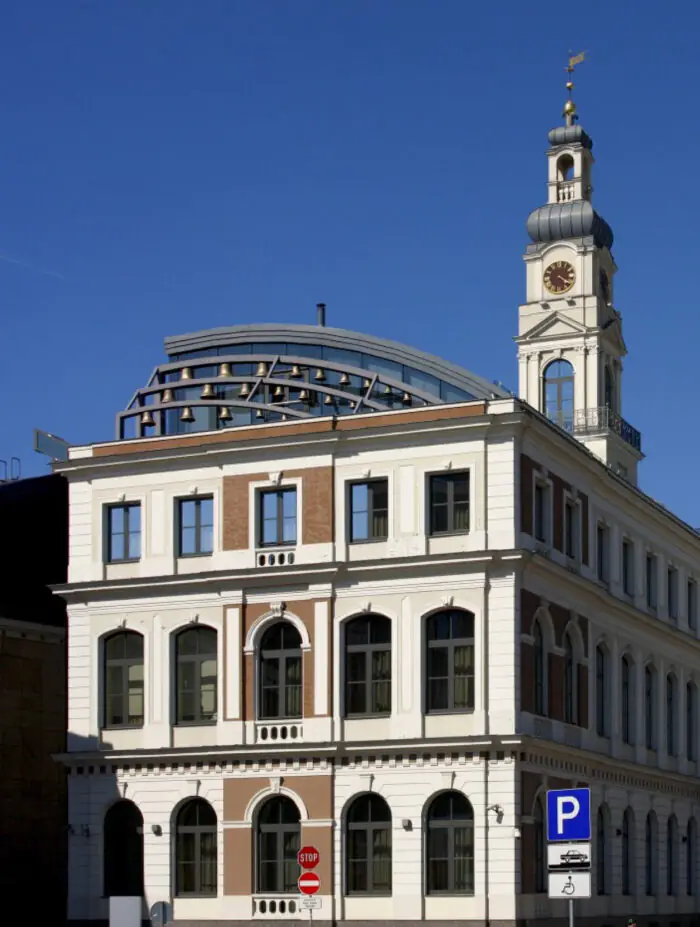
redzet.eu
Covers
The manifestation of revanchist sentiments can also be seen in the desire to neutralize Soviet modernism. Buildings built in the 1960s–1980s were not only demolished, but also reconstructed to the point of almost complete loss of their original appearance. Often Soviet projects not only poorly corresponded to modern ideas of comfort, but also repelled potential investors.
This was the case with the Hotel Latvija, which, almost thirty years after its construction, was covered with a new facade — a more fashionable «cover». Several Soviet buildings in Riga are covered with such «covers», but the Radisson Blu Hotel on Elizabetes iela 55 is the most famous. The famous panoramic elevator appeared at the end of the building, where anyone can go to the top floor and see the city from above.
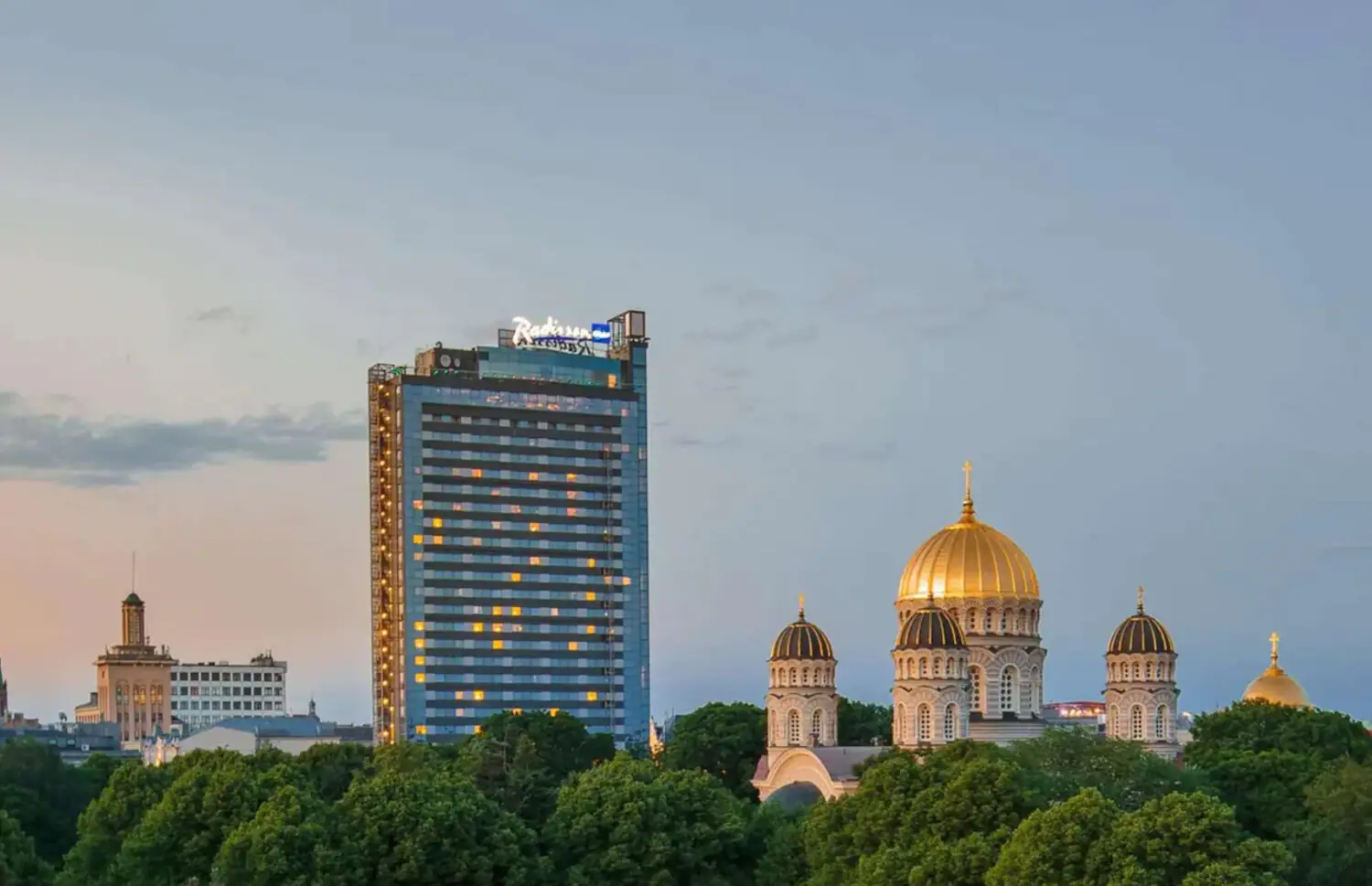
radissonhotels.com
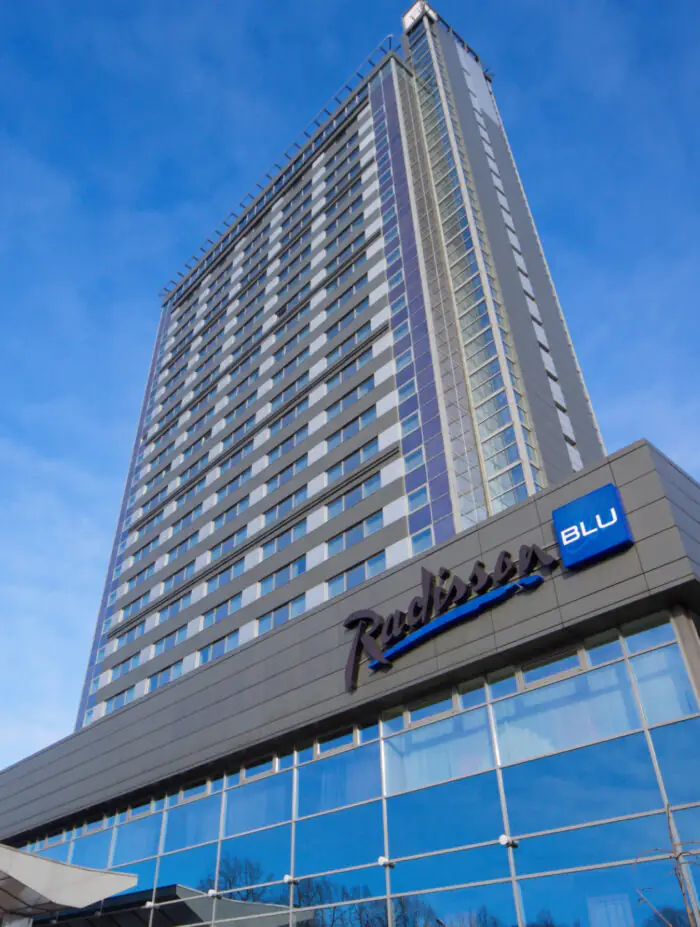
hotel.info
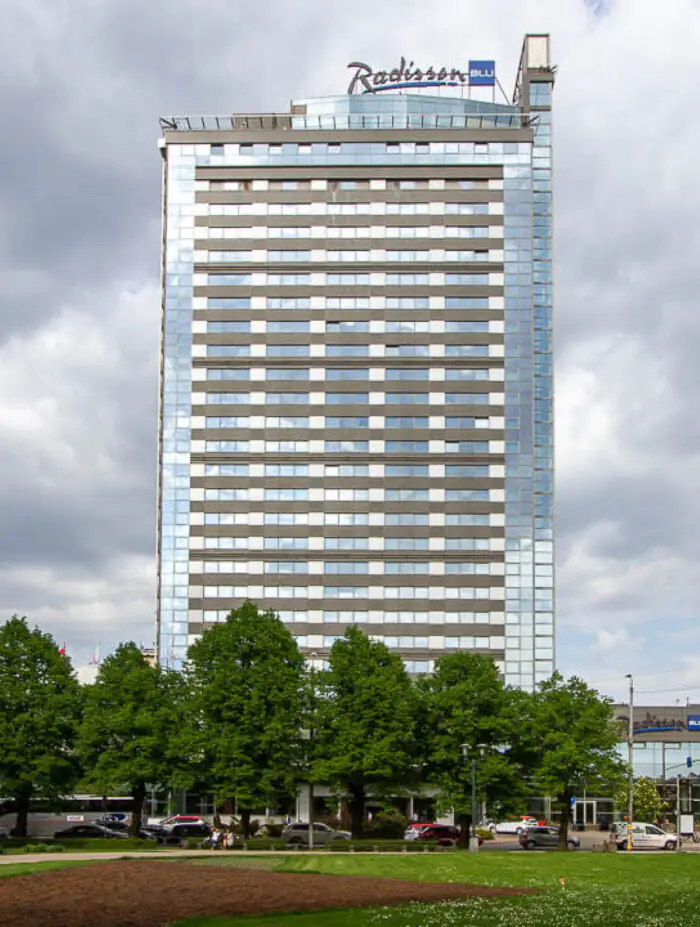
kathmanduandbeyond.com
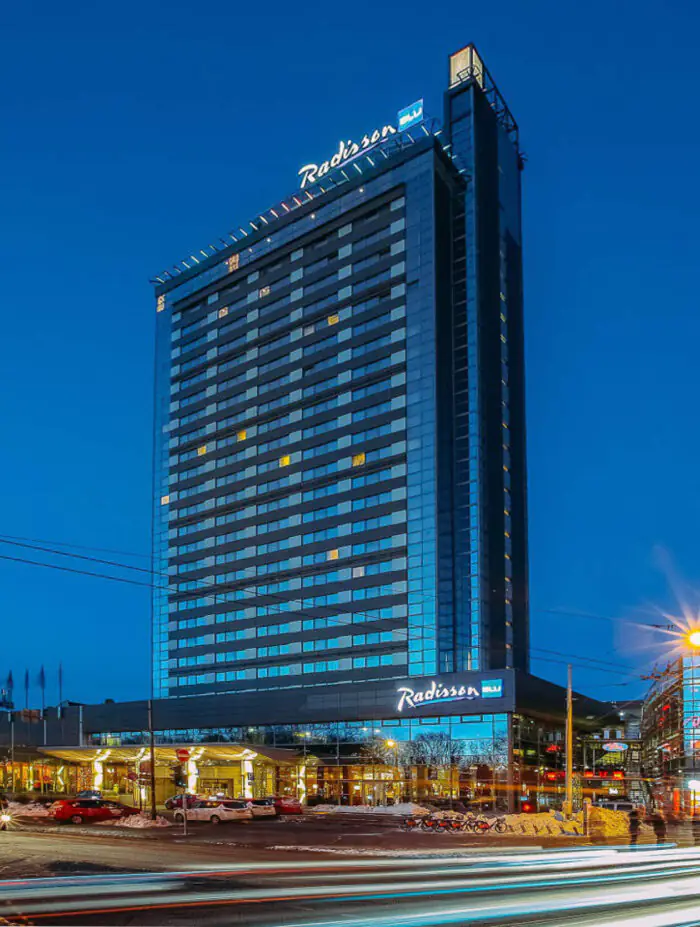
otrum.com
Ducks
The concept of «ducks» in architecture appeared at the turn of the 1960s–1970s thanks to the American postmodernist Robert Venturi. This is what he called buildings that resemble specific things and by their image frankly show what exactly is in them. For example: a hamburger-shaped building that sells fast food, or a duck-shaped kiosk where you can eat duck.
Many architects criticize such buildings because their form is not subordinate to the function, and often, on the contrary, contradicts it: it is not always convenient to eat and cook hamburgers in a cafe whose design tries to replicate the shape of a burger. But postmodernists thought — why not? And they started building duck buildings.
One of the best examples of Riga’s «duck» is a port building resembling the captain’s cabin of a ship: the administrative building on Meldru iela 5A.
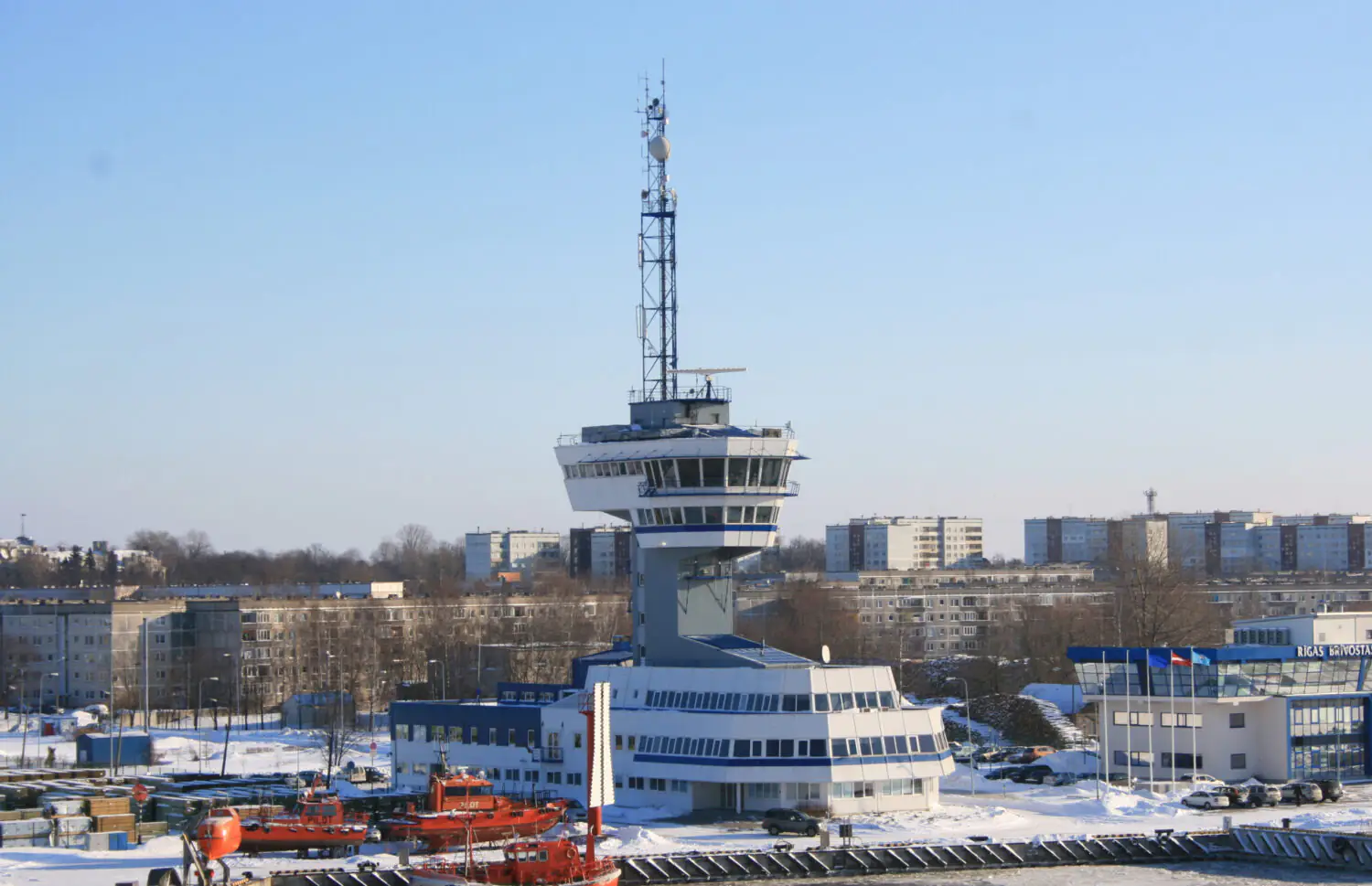
commons.wikimedia.org
Glasses
“Glasses” are multifaceted cylindrical towers that particularly irritate connoisseurs of aesthetically normative architecture. These glass formations seem to be trying to mimic historical buildings, but they do not intend to merge with them.
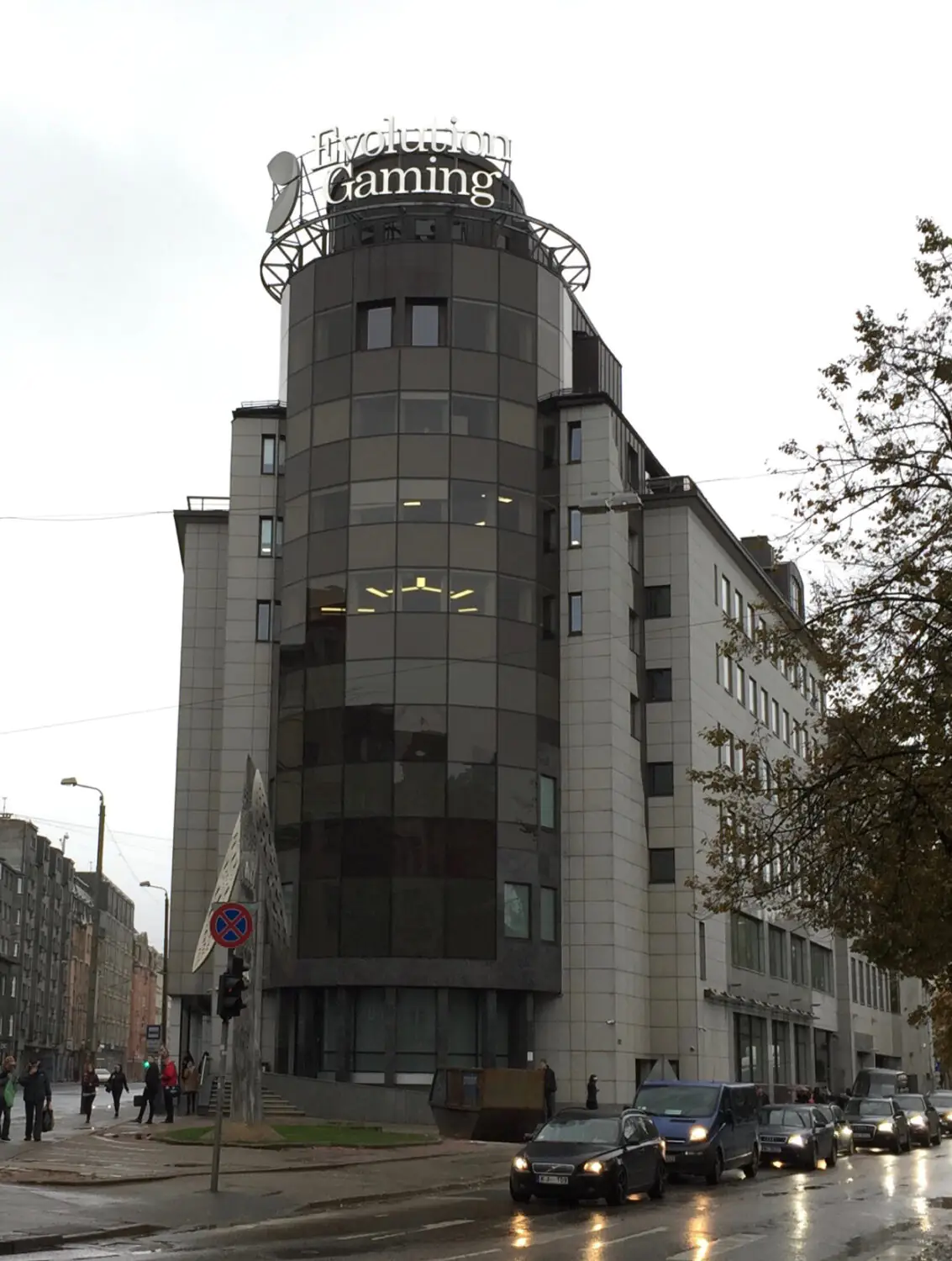
ksk-systems.com
A striking example of Riga’s “glass” is the office center at Brīvības iela 151. In this case, the classic architectural element—the tower—contrasts with the surrounding old houses to the maximum extent possible. This is due to the large amount of tinted glass and the expressive “crown cap” that adorns the multi-storey cylinder.
The period of the 2000s was a happy time when Latvia’s economy was adapting to market conditions. At that time, eclectic projects in the spirit of regionalism were no longer in vogue, and more daring architecture took their place. “Glass houses” were associated with prosperity and success, so they were in trend. With the onset of the global economic crisis in 2008, such projects gradually faded into the background.
Downtown
Imagine high-rise skyscrapers, big city lights, glowing advertisements—a world of big money and high speeds. Who doesn’t want to be at altitude and get a bird’s eye view of the city? Latvian architects of the 2000s could not resist the temptation to build a couple or three glass towers in Riga.
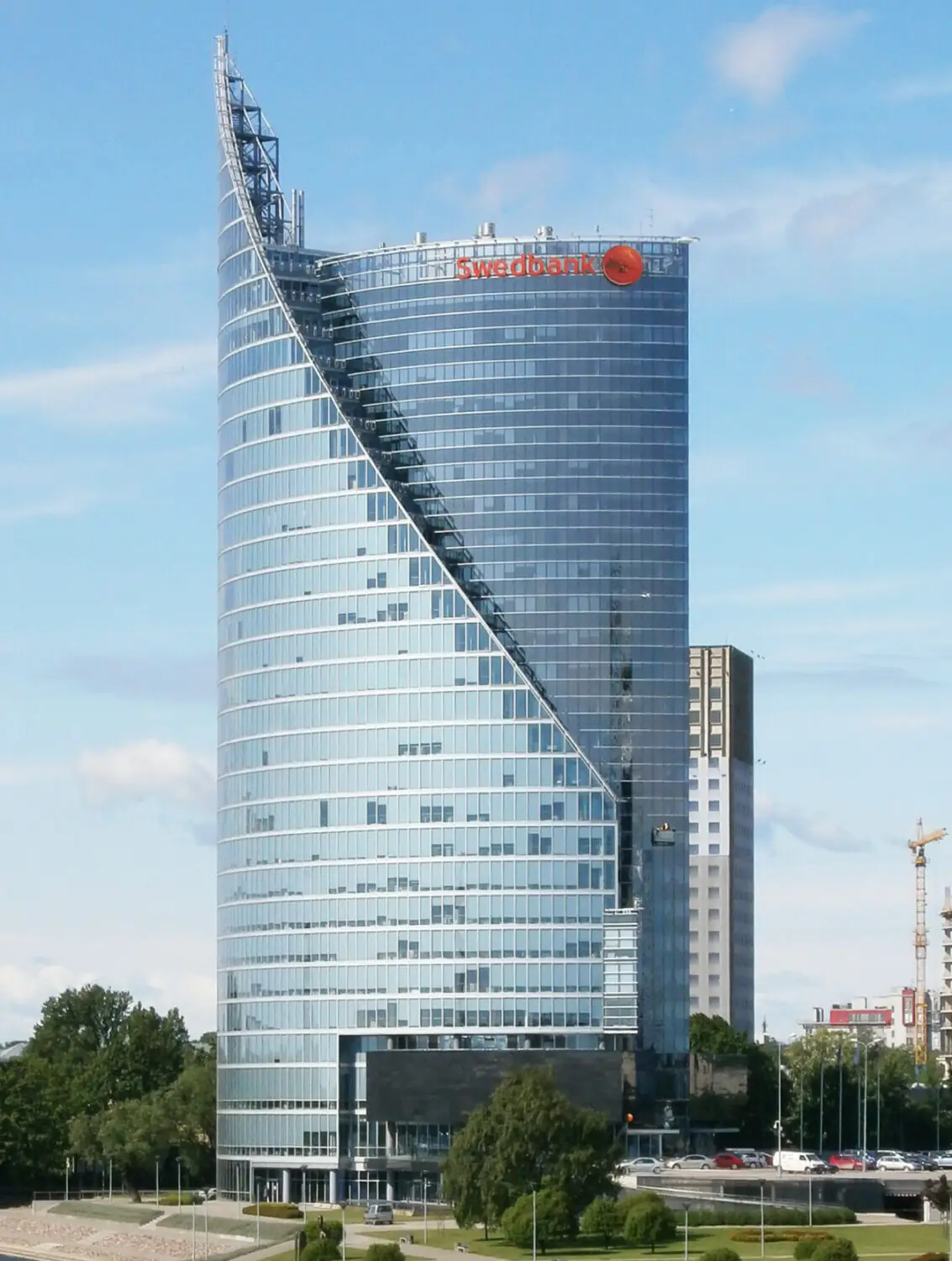
wikipedia.org
We cannot say that the construction of Riga’s skyscrapers is economically feasible, but how romantic they look! Riga’s most recognizable skyscraper—Swedbank on Balasta dambis 1a—is clearly inspired by the world-famous Burj Al Arab hotel-sail in the UAE. In the late 1990s and 2000s, replicas of the famous Dubai tower appeared in many countries. Latvia was not an exception. But in this case, it should be noted that the theme of sails is very relevant for Riga as a city closely connected with water and navigation.
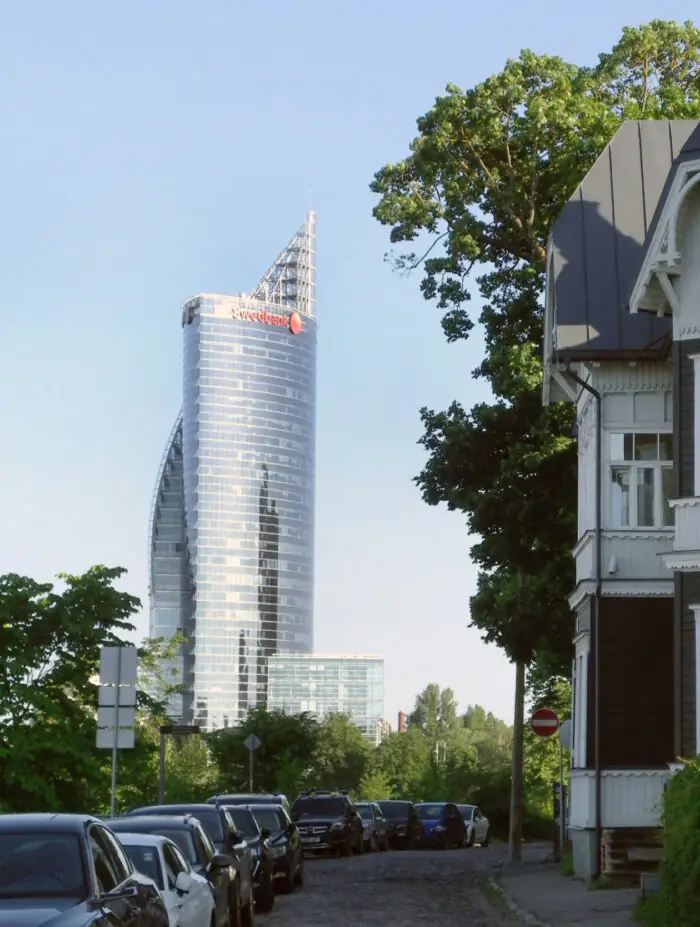
wikipedia.org
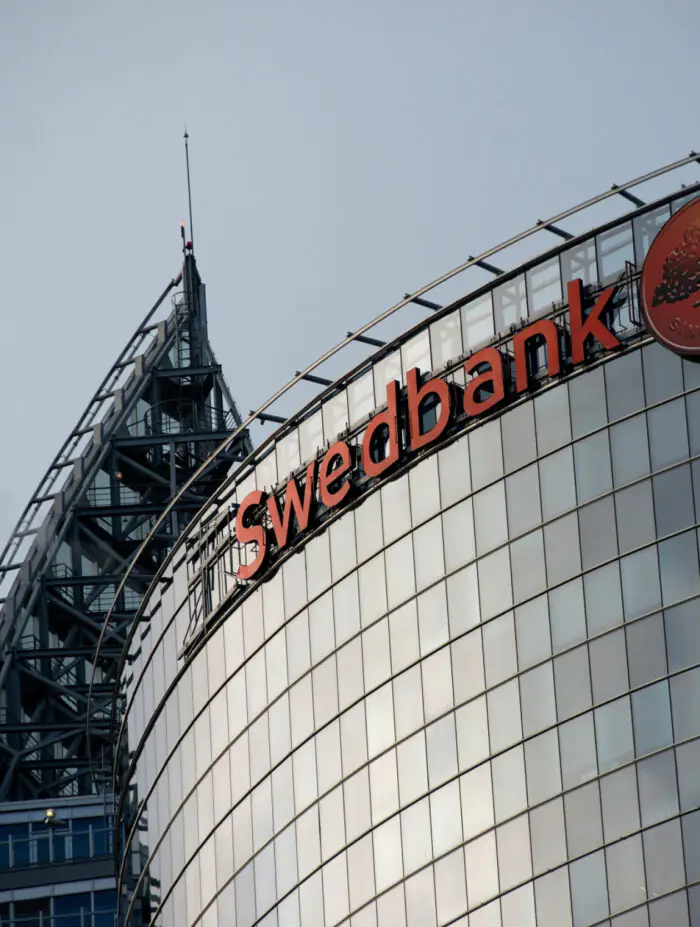
bloomberg.com
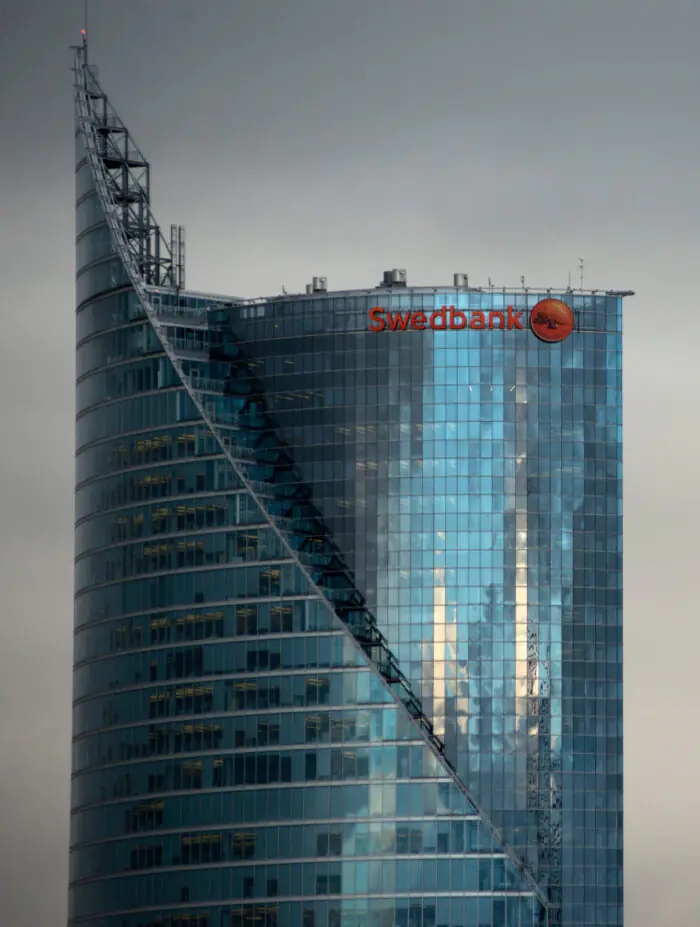
bloomberg.com
Fusion
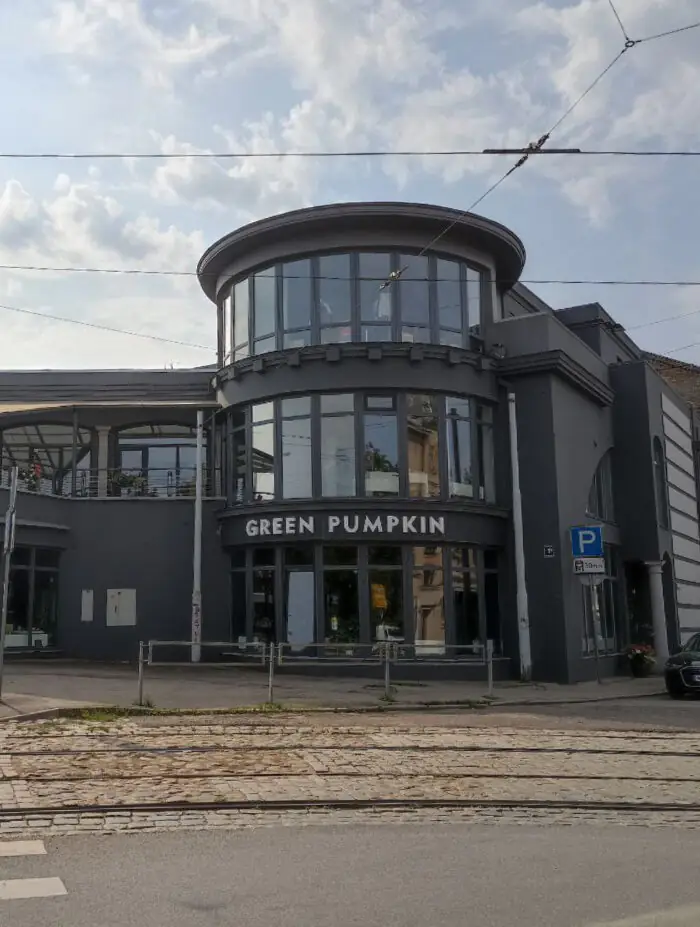
The combination of the incongruous, the abundance of different forms, and a complete architectural rampage—all of this can be summed up in one simple and succinct term: fusion. It reflects the huge variety of artistic delights of the 1990-2000s. It is hard to imagine a more self-expressive and body-positive architecture: «wearing beach flip-flops with socks and a jacket — so what? I have the right!».
A typical example of fusion architecture is the multifunctional center on Pulkveža Brieža iela 47.
After reading the text, it may seem that, while calling for respect for the architecture of capitalist romanticism, we are still ironizing it a bit. Ducks, glasses, cases, phoenixes—what is this but mockery? But it’s important to remember the main postmodernist precept: playfulness is not a vice. Naughty architecture deserves appropriate names. And we must admit that the term “duck” evokes more pleasant emotions and is much better remembered than any “metamodernism”. What associations do these buildings evoke in you?


